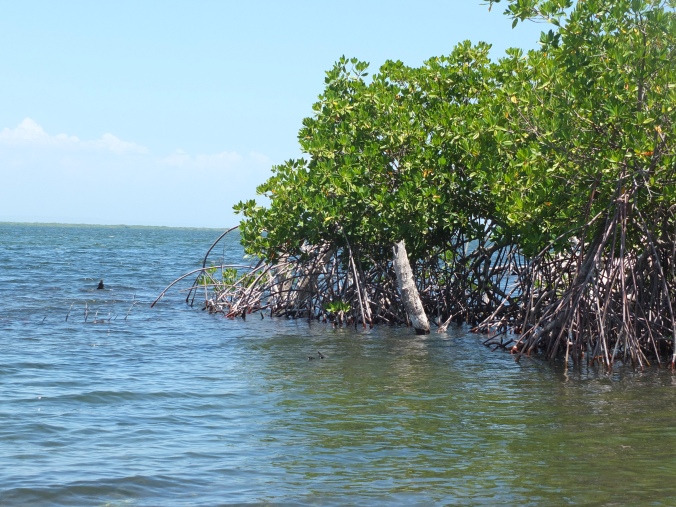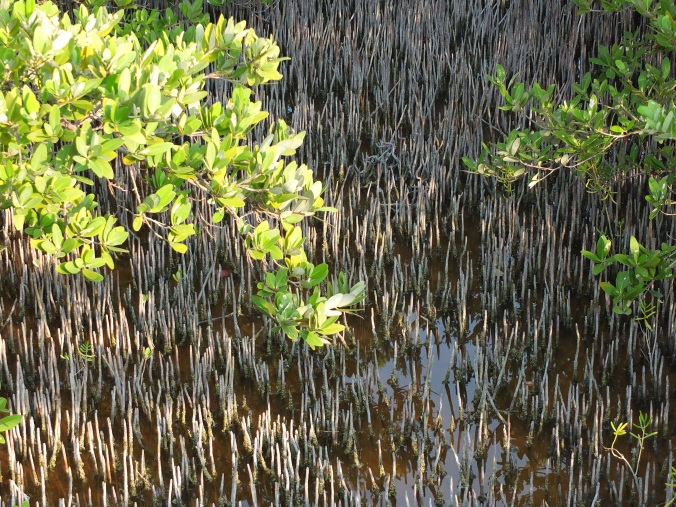
Fishing in the Mangroves near Portland Bight
Mangrove swamps are probably not the first thing that comes to mind when people think about the Jamaican coastline, which is famous for its long stretches of idyllic sandy beaches and swaying palm trees. But, they are very much part of the Caribbean. In Jamaica, mangroves swamps or forests are present all over the island, with the highest concentration on the South coast, probably because it is the least developed.
Swirling with bugs, the murky waters of mangroves aren’t always the most attractive places for tourists to visit, but they are extremely important to local ecosystems in so many ways. Mangroves protect the coastline from erosion, provide habitats and nurseries for wildlife, and food sources for birds and fish. If sustainably managed, there’s plenty to go around, and they provide a livelihood for fishermen too. I personally love visiting them just to see the wildlife. (Though the thought of crocodiles lurking somewhere does freak me out a bit.)

Buggy haven for life

Yet, as in many other places, Jamaican mangroves are under peril from a plethora of threats. Most commonly, they are cleared for construction projects including housing and hotels; I have personally seen dredgers in action, pulling up the mangrove roots in preparation for the expansion of a new upscale resort near Montego Bay. In poor areas the trees are harvested as a source of charcoal production. Near Kingston particularly, pollutants from factories and farming create a toxic environment that kills the resident wildlife and oil pollution kills the mangrove’s roots. As mangroves deteriorate, remaining coastlines become more vulnerable to other threats such as hurricanes. The knock-on impact of all of this is devastating to the mangrove’s delicate ecostructure and, unfortunately, their fate reminds me in so many ways of coral reefs.

The distinctive roots of mangrove trees rise above the waterline. Mangrove roots need oxygen so they grow vertically to ensure they get their fill.
Some of my favourite days here have been watching the birds and fish surprise me, and trying to capture them with my camera. Here are a few favourites:




I loved learning about the mangroves, not so happy about the perils created by man. I missed the photos, which I’m sure were gorgeous. They didn’t download.
LikeLiked by 1 person
That’s odd. Did you try on a different computer? They are showing up just fine on both home computers and my work one.
LikeLike
Gorgeous photos, Caroline! I find mangroves endlessly fascinating. They only make up about 2 per cent of our forest cover right now, but were widespread a century ago. However, they are not declining as rapidly as other types of forest. Efforts are being made to regenerate mangroves. And you saw some beautiful White Ibis!! Lovely pic. I have never seen one, as they are seen only in certain spots on the south coast. They would be in nesting mode, about now.
LikeLike
Well, its encouraging to know that they are doing better than I feared. I wish I had your knowledge of birds.
LikeLiked by 1 person
Not to say the mangroves haven’t been hit hard in recent years, but I think people are beginning to recognise their value, especially with climate change. Also so thankful that after touring Goat Islands in the Portland Bight, the PM decided against that huge Chinese project – that would have destroyed a really superb mangrove system all around the islands. That was a big victory for environmentalists. There’s always hope!!
LikeLiked by 2 people